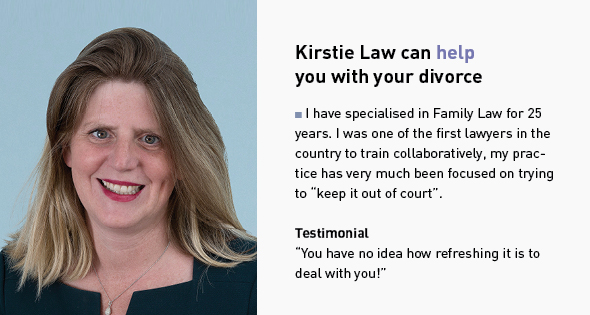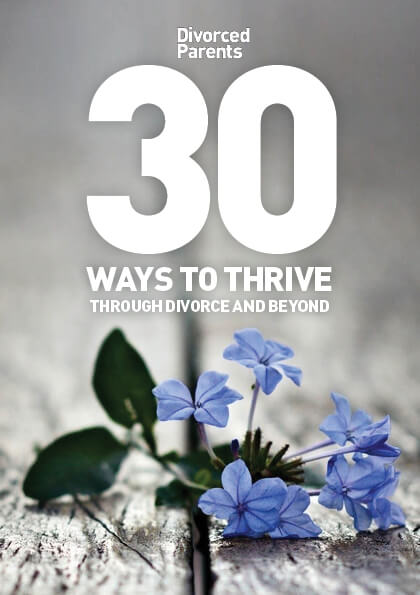Form E – Part 1

- This blog contains affiliate links, which we may receive a commission for purchases. The decision is yours, whether or not you decide to buy.
The financial statement (Form E) is the form that both parties to a divorce are required to complete if either of them makes an application to the court.
In practice it is not unusual for these forms to be voluntarily exchanged where a couple are hoping to reach a settlement out of court (e.g. through solicitor negotiations, mediation, collaboration or arbitration).
Running to some 25 pages the form at first glance can look quite daunting. In fact it really is not as bad as it looks.
Some people manage to complete it in less than an hour. If you are someone who finds forms difficult then my advice is to do four pages a day over the course of a week. The first page is very straightforward just general information, including for example the date of the marriage and dates of birth of the children.
The second page asks for the current and future arrangements for the children, details of any child maintenance calculation and any previous court proceedings. Part 2 of the form starts on page 3 and continues until page 18.
It comprises sections A to G with A and B dealing with any interest in property (A being the family home and B any other property owned). If property is jointly owned then your interest is 50% and notional sale costs are normally deducted at 2-3% of the value of the property.
In calculating your interest (or share of the equity) the amount owed on the mortgage and any early redemption penalties are also deducted.
By way of example, if a property is worth £500,000 with an outstanding mortgage of £200,000 and an early redemption penalty of £10,000, then using a figure of 2.5% for costs of sale would mean equity of £277,500 (£500,000 less £200,000, £10,000 and £12,500), so a joint owner’s interest would be £138,750.
If you are unsure as to the value of a property then do not incur costs paying for a valuation at this stage. If you have a fair idea use this figure and if your spouse does not agree then a valuation can be ordered by the court in due course.
If you have no idea then obtain informal valuations from estate agents (and there should not be a charge for this) but do make sure that you ask them what they think the property will achieve not just what price they would recommend marketing it at.
Section C is the longest and hardest section of the form for most people. It is the one that requires the most effort.
Again with anything that is jointly owned, your interest is 50% but to complete this section you may need to make enquiries, for example checking bank balances and requesting up to date values for any investments. The section is subdivided and I deal with some of the most common queries adopting the section numbers.
Section 2.5 deals with policies and note that you should include here all policies, even if they do not have a value eg until death.
If they do not have a value now your current interest will be nil but if the policy has a surrender value then it is this figure that is used to calculate your interest in the policy, i.e. a joint owner’s interest would be 50% of the surrender value.
Section 2.6 requires details of monies owed to you for example monies lent to a friend or family member often causes confusion because it refers to cash sums held in excess of £500 and people sometimes assume that they have to repeat the bank balances here.
In fact this is not the case (bank balances go at 2.3) and this section is to cover situations where people carry a lot of cash on them or, for example, keep cash in a safe.
Section 2.8 is personal belongings individually worth more than £500 and this is the second hand value not the replacement/insurance value i.e. what an item would be worth if you were to sell it now.
Section D is for capital liabilities such as credit cards and store cards (again with any accounts in joint names your interest is 50% of the figure). There is also a section for Capital Gains Tax which applies in relation to some investments including property that is not your sole residence.
If you are unsure of the Capital Gains Tax position it is sensible to speak to an accountant.
Section E deals with business assets and again, if you are unsure with regard to the valuation, it is worth speaking to your accountant and solicitor about how to complete this section.
Section F is for pension information and it is fine to take the details from your last statement, assuming this is less than a year old but if you do not have a recent statement then it is sensible to send the whole of this section also labelled 2.13 to your pension company and ask them to complete all the boxes.
Section G is designed to cover anything that has not already been disclosed, for example Trust interests, share option schemes and commodities and again if you have these sorts of interests it is worth speaking to your solicitor about how to complete the details on the form.
This is because often for example Trust interests and share options do not have a current value but it is important that the potential future interest is disclosed. The next sections of the form (H to L) deal with income and it is sensible to use net figures for everything. If you are unsure, for example, what your net income was and is look at the last P60 amd payslips or ask your employer’s accounts department.
If you are self-employed you may find it helpful to speak to your accountant to check what your net income is and how this is paid (for example it may be through dividends).
Section J requires investment income, including in respect of rental properties, to be disclosed.
Finally, Section K deals with income from State benefits and all State benefits should be disclosed. People often forget about Child Benefit or, if they remember, assume that it is paid monthly but in fact it is paid four weekly so you should take the total that you receive and multiply it by 13 and divide by 12 to get the monthly figure.
If you have not already disclosed all your income then there is a further section at L for any other income, for example pension income. Attached to the form are documents confirming the financial position including bank statements, pay slips and pension statements which should confirm the figures stated on the form.
The final page of the form sets out what must be attached. When attaching documents do check the figures confirm those stated in the form.
Section 3 of the form requires you to calculate your income and capital needs. Most firms of solicitors have a proforma to assist with calculating income needs broken down into sections such as housing, car, entertainment etc.
When completing the capital needs it is important to be realistic (bear in mind your spouse will have capital needs as well) and to discuss with your solicitor what amount might be reasonable, for example with regard to rehousing.
It is not unusual when resolving matters through mediation or collaboration to complete the above sections but then not to complete Section 4 which is the narrative sections. If however you are completing Section 4 e.g. because you are going through the court process then please see Form E Explained Part 2.
Written by Kirstie Law Solicitor, Collaborative Lawyer and Mediator at Thompson Snell & Passmore. Visit www.ts-p.co.uk for further information.
PHOTO CREDIT: TIM CAYNES
You may also like
Books
Buy now from Amazon
- The Co-Parenting Handbook
- Fair Share: How the divorce courts in England & Wales deal with your money
- The Book You Wish Your Parents Had Read THE #1 SUNDAY TIMES BESTSELLER
Podcast
This personal finance podcast is for women, including female entrepreneurs to learn personal finance, money mindset & practical money management tips to be financially confident. To get in control of money, to budget, gain financial confidence, learn how to invest, save money & manage money mindset and behaviours. Hosted by a multi- award winning qualified financial planner and financial coach.
- Listen to the In Her Financial Shoes Podcast
- Catherine Morgan full profile
- More professional podcasts
Articles
- 8 Ways You Can Stay Financially Fit After Your Divorce
- Five Things To Let Go Of After Divorce
- Buying A Home Post Divorce Part 1
Videos
Practical advice and tips from professionals on what to do with issues and challenges around divorce from parenting to finance.
Events
Practical tips & advice designed to help people going through divorce, whether online or in person.
Useful links
Here's a selection of organistaioins from parenting to finance to help you with your divorce.
Finance professionals


.jpg)





.jpg)






